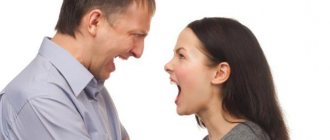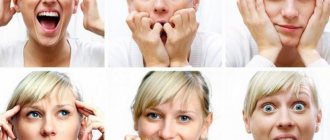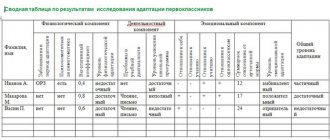“Control yourself,” we say to ourselves or to someone else, which is more often interpreted as “be patient.” Is this really true? Is it possible to control yourself without harm to your health? Is it possible to distance yourself from problems, change your attitude towards them, learn to manage your emotions? Yes. Self-regulation is the ability to manage your emotions and psyche in a stressful situation.
What is self-regulation
Self-regulation implies an assessment of the situation and adjustment of activity by the individual himself, and, accordingly, adjustment of the results of activity. Self-regulation can be voluntary or involuntary.
- Voluntary implies conscious regulation of behavior in order to achieve the desired goal. Conscious self-regulation allows a person to develop individuality and subjectivity in his activities, that is, life.
- Involuntary is aimed at survival. These are subconscious defense mechanisms.
Normally, self-regulation develops and forms along with a person’s personal maturation. But if the personality does not develop, the person does not learn responsibility, and self-awareness does not develop, then self-regulation, as a rule, suffers. Developing self-regulation = personal development.
In adulthood, thanks to self-regulation, emotions are subordinated to the intellect, but in old age the balance shifts again towards emotions. This is caused by natural age-related decline in intelligence. Psychologically, old people and children are similar in many ways.
Self-regulation, that is, the choice of optimal implementation of personal activity, is influenced by:
- personality traits;
- external environmental conditions;
- goals of activity;
- the specifics of the relationship between a person and the reality around him.
Human activity is impossible without a goal, but this in turn is impossible without self-regulation.
Thus, self-regulation is the ability to cope with feelings in socially acceptable ways, accepting norms of behavior, respecting the freedom of another person, maintaining safety. In our topic, the conscious regulation of the psyche and emotions is of particular interest.
History of the discovery of the ability
The first scientist who made a great contribution to the discovery and further development of this skill was I.P. Pavlov. He learned to artificially influence the blood pressure of animals and change it using several methods:
- small cuts;
- introduction of various substances into the blood;
- nerve irritation.
He proved that after a change in blood pressure, it is enough to wait a little for it to recover. Thanks to this, the principle of self-regulation was developed. With the help of further research, the scientist found that this principle applies to all functions of the body.
Theories of self-regulation
System activity theory
Author L. G. Dikaya. Within this concept, self-regulation is considered both as an activity and as a system. Self-regulation of functional states is an activity that is associated with adaptation and the professional sphere of a person.
As a system, self-regulation is considered in the context of a person’s transition from unconscious to conscious, and later forms brought to automatism. Dikaya identified 4 levels of self-regulation.
Involuntary level
Regulation is based on nonspecific activity, processes of excitation and inhibition in the psyche. The person does not control these reactions. Their duration is not long.
Custom level
Emotions are involved, the need for self-regulation arises in difficult situations of fatigue and stress. These are semi-conscious ways:
- holding your breath;
- increased motor and speech activity;
- muscle tension;
- uncontrolled emotions and gestures.
A person tries to awaken himself, as a rule, automatically; he does not even notice many changes.
Conscious regulation
A person is aware not only of discomfort, fatigue, tension, but can also indicate the level of an undesirable condition. Then the person decides that, with the help of some methods of influencing the emotional and cognitive sphere, he needs to change his state. It's about:
- about will
- self-control
- auto-training,
- psychophysical exercises.
That is, everything that is of interest to you and me within the framework of this article.
Conscious and goal-oriented level
The person understands that this cannot continue like this and that he must choose between activity and self-regulation, that is, eliminating discomfort. Priorities are set, motives and needs are assessed. As a result, the person decides to temporarily suspend activity and improve his condition, and if this is not possible, continue activity in discomfort, or combine self-regulation and activity. The work includes:
- self-hypnosis,
- self-order,
- self-conviction,
- introspection,
- self-programming.
Not only cognitive but also personal changes occur.
System-functional theory
Author A. O. Prokhorov. Self-regulation is considered as a transition from one mental state to another, which is associated with reflection of the existing state and ideas about a new, desired state. As a result of a conscious image, corresponding motives, personal meanings and self-control are activated.
- A person uses conscious methods of self-regulation to achieve the imagined image of states. As a rule, several techniques and means are used. To achieve the main goal (state), a person goes through several intermediate transition states.
- The functional structure of self-regulation of the individual gradually develops, that is, habitual, conscious ways of responding to problematic situations in order to maintain the maximum level of life activity.
Self-regulation is a transition from one state to another due to internal switching of work and the connection of mental properties.
The success of self-regulation is influenced by the degree of awareness of the state, the formation and adequacy of the desired image, the realism of feelings and perceptions regarding the activity. You can describe and understand the current state by:
- bodily sensations;
- breath;
- perception of space and time;
- memories;
- imagination;
- feelings;
- thoughts.
General principles
A number of mental states lead to disorganization, so they need to be regulated. There are two ways:
- Using external influence on the psyche.
- Self-hypnosis.
The concept of self-regulation relates to the second point, that is, a person helps himself to independently cope with a tense situation. Techniques of psychological self-regulation presuppose volitional participation; the person’s personality matters.
Mental self-regulation is the management of the emotional state by influencing oneself using words, images, muscle tone, and changes in breathing.
Psychological self-regulation allows you to eliminate emotional stress, reduce signs of fatigue, and increase psychophysiological reactivity.
Modern self-management of the condition is a kind of psychohygienic method that increases the body's resources.
Components and levels of self-regulation
Self-regulation includes 2 elements:
- Self-control. Sometimes it is the need to give up something pleasant or desirable for other goals. The beginnings of self-control appear as early as 2 years of age.
- The second element is consent. We agree on what we can and cannot do. After 7 years of age, a person normally already has formed consent.
For the development of conscious self-regulation, it is important to have the following personality traits:
- responsibility,
- perseverance,
- flexibility,
- reliability,
- independence.
Self-regulation is closely related to the will of the individual. To manage his behavior and psyche, a person needs to build new motives and motivations.
Therefore, self-regulation can be divided into 2 levels: operational-technical and motivational.
- The first involves the conscious organization of action using available means.
- The second level is responsible for organizing the direction of all activities through the conscious management of the emotions and needs of the individual.
The mechanism of self-regulation is life choice. It turns on when you need to change not circumstances, but yourself.
Self-awareness (an individual’s awareness of his own characteristics) is the basis of self-regulation. Values, self-concept, self-esteem and level of aspirations are the initial conditions for the operation of the self-regulation mechanism.
Mental characteristics and properties of temperament and character play a significant role in the development of self-regulation. But without motive and personal meaning it doesn’t work. Conscious regulation is always personally significant.
Exercises
Although self-regulation has different goals and tasks, it can be developed through regular practice. A systemic-functional approach to mastering the method of self-regulation helps develop awareness and stress resistance.
The most common exercises that will help calm your nerves and concentrate on the task:
| Exercise | Description |
| Rocking | Exercise helps to distract yourself from annoying thoughts. To perform this, you need to relax while sitting or standing, throwing your head back a little. With your eyes closed, begin to sway from side to side at a comfortable pace, directing your thoughts to bodily sensations. |
| Disclosure | Exercise increases energy flow, no matter the situation. To perform it, you need to stand up straight and start swinging your arms in different directions at a comfortable pace. The emphasis should be on even and deep breathing - this helps to distract from thoughts. Successful completion of the exercise gives you a feeling of lightness, cheerfulness and a positive attitude. |
| Five | Exercise helps to take your mind off monotonous work and increase your attention. To do this, you need to purposefully examine objects in the room or concentrate on your own perception. Next you need to answer the following questions:
Finding answers will help distract you and invigorate your brain for future work. |
| Thoughts on paper | Keeping a diary is a great way not only to free your head from many thoughts, but also an opportunity to analyze your own psycho-emotional state. Psychologists advise keeping a diary regularly, writing down random thoughts in the morning (“stream of consciousness”), or writing down impressions after the day in the evening. This exercise helps reduce stress and calm you down. |
| Useful Imagination | Practicing positive imagery and thinking is another way to develop self-regulation. Visualization as a confidence booster is a proven method to improve skills, prepare for public speaking, and cope with negative emotions. The ability to create positive images is a skill that can be developed with regular and careful practice. To do this, you need to imagine the situation as clearly as possible, replay in your imagination your own sensations, possible smells and other little things that make your imagination as close to reality as possible. |
| Correct breathing | Another way to calm your nerves, brain and emotions is to learn to breathe. Salo who wonders whether he is breathing correctly and deeply enough. Today there are many techniques for proper breathing. So, for example, to calm the mind, it is advised to consciously inhale and exhale for a count of 21, counting from the end and carefully monitoring each movement of the lungs and air. This exercise helps you calm down and switch from annoying thoughts. |
In psychology, self-regulation is a universal way to improve the quality of life. It helps to cope with a wide range of problems, learn to regulate one’s own well-being and increase stress resistance - personal qualities that make every person stronger.
Features of self-regulation by gender
Women are more susceptible to fear, irritation, anxiety, and fatigue than men. Men are more likely to experience loneliness, apathy and depression.
The methods of self-regulation used by men and women also differ. The men's arsenal of methods is much wider than the women's. The difference in self-regulation between the sexes is due to several factors:
- historically established differentiation of social roles;
- differences in the upbringing of girls and boys;
- specifics of work;
- cultural gender stereotypes.
But the biggest influence is the difference in the psychophysiology of men and women.
Women's methods of self-regulation are more of a social nature, while men's are biological. The direction of male self-regulation is internal (directed inward), while female self-regulation is external (directed externally).
In addition to gender, the characteristics of self-regulation are associated with age, mental and personal development of a person.









